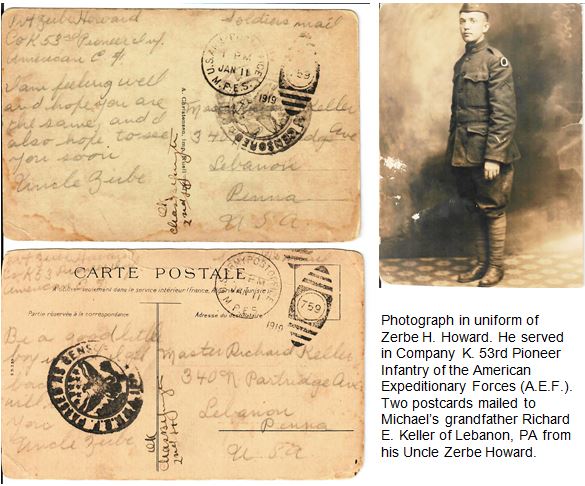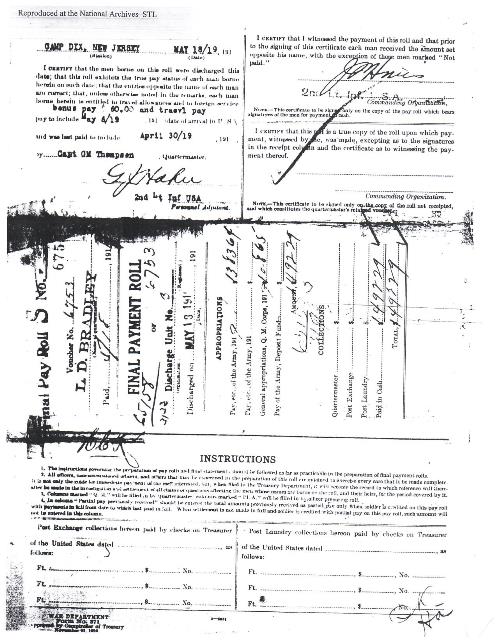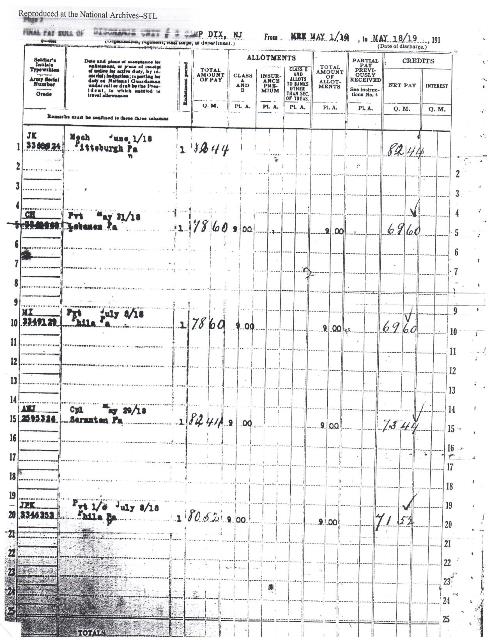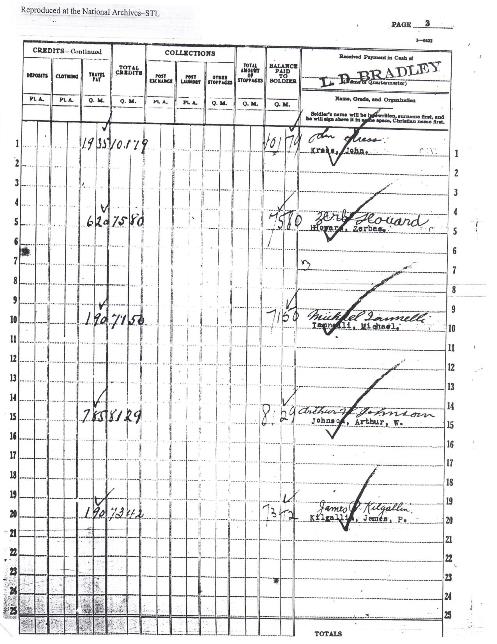Official Military Personnel Files (OMPFs) are 20th and 21st U.S. military records for conflicts such as WWI, WWII, and beyond. OMPFs are packed with great genealogy clues, but millions were destroyed by a 1973 fire. Here’s how to find what records still remain, and what you might find if your relative’s OMPF went up in flames.

What are Official Military Personnel Files?
If your ancestor served in the U.S. military during the 20th or 21st century, related service records are called Official Military Personnel Files (OMPFs), or sometimes “201 files,” named after the brown file folder that holds them. These are available for each of the military branches: Army, Navy, Air Force, Marines, and Coast Guard. They are generally held at the National Personnel Record Center in St. Louis, Missouri. (Exceptions for veterans discharged since 1995 may be at other government offices.)
According to the National Archives, Official Military Personnel Files are “primarily an administrative record, containing information about the subject’s service history such as: date and type of enlistment/appointment; duty stations and assignments; training, qualifications, performance; awards and decorations received; disciplinary actions; insurance; emergency data; administrative remarks; date and type of separation/discharge/retirement; and other personnel actions.” The level of detail in complete files make them invaluable genealogical records.
How to Access Official Military Personnel Files
On July 12, 1973, a disastrous fire ravaged the building where the OMPFs were housed. Between 16 and 18 million personnel files were destroyed or damaged; these affected names alphabetically after James E. Hubbard. It was a serious loss for two particular branches of the military:
- Army Personnel discharged 1912-1960: 80% Loss (4 in every 5 files).
- Air Force Personnel discharged 1947-1964: 75% Loss (3 in every 4 files). (Remember: the Air Force wasn’t officially organized until September 14, 1947. Before this date Air Force records were part of the United States Army Air Corps, then part of the U.S. Army.)
The Navy, Marines, and Coast Guard records were largely unaffected by the fire.
Surviving OMPFs and reconstructed records relating to destroyed files are considered to be archival (or open to researchers without restrictions) 62 years after the date of discharge. This is a rolling date, so discharge dates of 1955 and earlier are open to the public. In 2018, that date will change to 1956, and so on. More recent records are considered non-archival and subject to restrictions; only the veteran or next-of-kin have full access to the files.
You can access Official Military Personnel Files in three ways:
1. Go to St. Louis in person. Appointments are recommended, as research space is limited. Click here for information about requesting an appointment, the availability of records, copy fees, and hours of operation.
2. Employ an independent researcher. Click here for the National Archives’ list of researchers.
3. Request records by mail. Here’s a link to the online portal for requesting these records; here’s a direct link to the PDF format of Standard Form 180, which you can print and mail in.
My grandfather’s OMPF: What survived?
I didn’t fully grasp how many records were lost in the fire in 1973 until I ordered a record of one of my family members. When my grandfather Richard Keller was a small child, he received postcards from his great Uncle Zerbe Howard: I remember him. He died when I was 10 years old. Zerbe served during World War I and was a resident of Lebanon, PA.

I have in my possession the 2 postcards sent my grandfather that listed his name, rank, and military unit. I ordered his file which took several months, and when it arrived I expected it to be full of information. Unfortunately, his file was completely destroyed.
The only reconstructed records located were three pages recording him on a final payment roll with other men from his unit. Here’s an image of that record, which seems so sparse compared to what that original OMPF may have contained:



This final payment roll from Camp Dix, New Jersey is dated from April 1918 to May of 1919. It reveals that the soldiers on this roll were discharged on this date, that they were entitled to travel allowance and foreign service bonus pay of $60 and what their individual payments were. Zerbe even appears to have signed the record in his own scrawling handwriting. While it may be discouraging to have such limited information available due to the 1973 fire, it’s still worth pulling records such as these to track your military ancestors.
The National Personnel Record Center now has other records available to researchers to help fill in some of the gaps. For example, the Army filed Morning Reports, organized by unit. I also found local records in Pennsylvania that were not in the hands of the federal government. Listen to the free Genealogy Gems Podcast or come back to this blog for future tips on researching your 20th-century U.S. relatives’ military service.
Looking for 19th century US military records?
 If your ancestor served in the military during the 1800s or earlier, you’ll want to look for his Compiled Military Service Records at the National Archives in Washington, DC. The exact dates for each military branch vary in years accordingly. Click here to learn more about those.
If your ancestor served in the military during the 1800s or earlier, you’ll want to look for his Compiled Military Service Records at the National Archives in Washington, DC. The exact dates for each military branch vary in years accordingly. Click here to learn more about those.
For more ongoing training in tracing your military ancestors, tune in to the free Genealogy Gems Podcastand listen for my segment, “Military Minutes.”





Very, very helpful information. I was misinformed about the records in St. Louis which were destroyed. My father served in World War II and his surname begins with a “G” so I will definitely use this information. Lisa, your products and information are wonderful. They have always been helpful. Once again, thank you.
Thanks for another informative article!
I was puzzled, however, by your statement “Between 16 and 18 million personnel files were destroyed or damaged; these affected names alphabetically after James E. Hubbard. ” I’ve seen other information about these records and didn’t think my Dalton ancestors’ records were saved.
I looked on the NARA site and found a helpful guide to the records at https://www.archives.gov/files/st-louis/pdf/finding-your-ww1-veteran.pdf
It says Army records were 80% destroyed without specifying surnames. But for Air Force records, it says Hubbard-Z were destroyed–which is probably what you meant to say?
The survival of records alphabetically BEFORE the name of James Hubbard has thwarted me for years, too. Mt grandfather’s surname was Allen, so I will be sending an app to see what they have. Thank you!